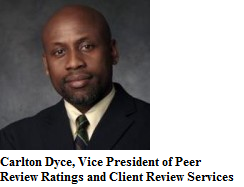Corporate Counsel Shift $5.8 Billion In House
See this press release from Friday, June 21, 2013. Click here for original source.
BTI Consulting Group’s research sees projected 2013 growth of only 1.8% in outside counsel spending.

Corporate legal departments shifted $5.8 billion from their outside counsel budget to internal spending. BTI Consulting Group's newest release of BTI Benchmarking Corporate Counsel Management Strategies reveals corporate counsel at the world’s largest companies continue to move dollars in house—and away from outside counsel. The shift drives a paltry projected 2013 growth of 1.8% in outside counsel spending instead of a 5.1% compound growth rate had corporate counsel spent the money on outside law firms.
Corporate counsel are bringing the following practice areas in house:
- IP prosecution
- Licensing
- Complex commercial contracts
- Litigation
- Regulatory and compliance
Corporate counsel’s top goal is to wring more value from their scarce legal dollars. “Shifting money in house and away from law firms is one value generating opportunity,” comments Michael B. Rynowecer, President of BTI. “For those not currently engaged with clients in redefining value outside of rates, we recommend a serious discussion with your clients about their goals in bringing work in house.” Continues Rynowecer, “devise your strategy to help your client exceed their goals faster than they might on their own.”
BTI conducted more than 300 independent, individual interviews with CLOs and General Counsel at Fortune 1000 companies and large organizations. Now in its 13th year, BTI conducts the only continuous benchmarking market study of corporate counsel worldwide.
Find more information about this and other compelling research at http://www.bticonsulting.com or contact BTI at 617.439.0333. BTI is the undisputed leader in providing high-impact strategic research to professional service firms and their clients.
 The topic of attorney rankings has been a hot one for several weeks. We've heard some say that attorney rankings, ratings and reviews don't help attorneys connect with consumers - we've also heard others say they matter a great deal.
The topic of attorney rankings has been a hot one for several weeks. We've heard some say that attorney rankings, ratings and reviews don't help attorneys connect with consumers - we've also heard others say they matter a great deal.
 According to
According to 
 Brian Farrell
Brian Farrell



